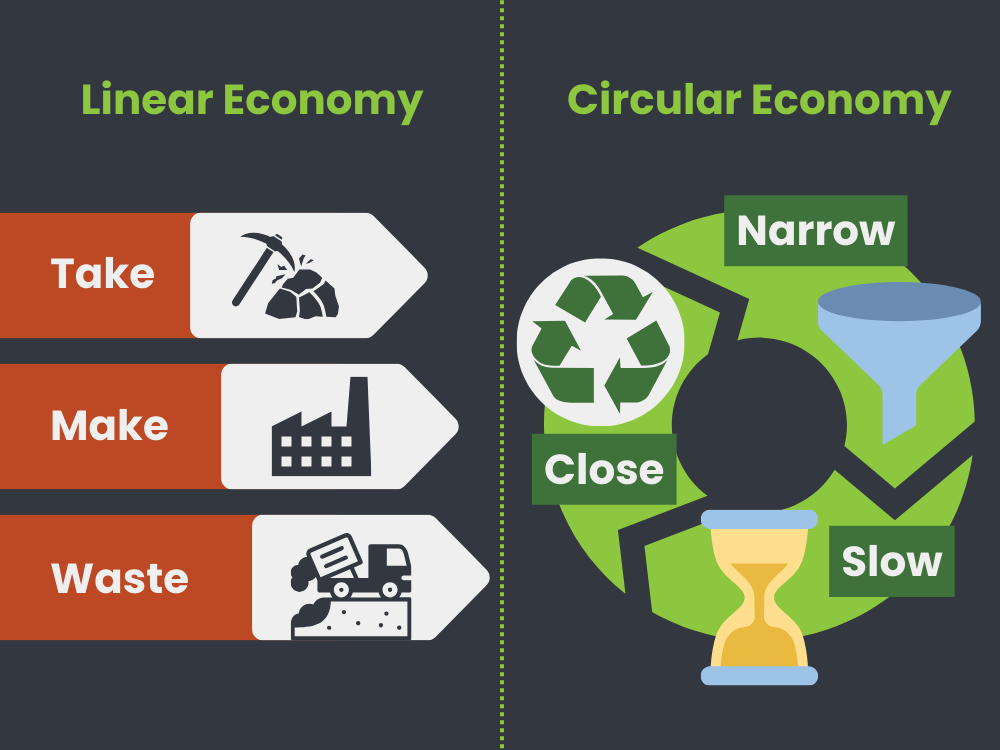Embracing Circular Design: ASI’s Principles and Guidelines in Action
Embracing “Design for Circularity” in aluminium production is not merely a matter of using recycled materials but involves a holistic approach that integrates sustainability into every stage of a product or project’s lifecycle, from conception to end-of-life. ASI is initiating new guidelines that guide designers, manufacturers, and civil society in making informed choices that align with the principles of circular economy.
27 June 2024
In recent years, the concept of designing for a circular economy has evolved beyond the simple substitution of materials. Today, we recognize that true sustainability requires a comprehensive understanding of the entire lifecycle of products and projects, and a concerted effort to transition from linear consumption models to circular ones. ASI’s Circularity Working Group (CWG) is working in line with this evolution to improve guidelines on Design for Circularity and drive meaningful change in the industry.
The complexity of circular design
Designing for a circular economy is a multifaceted challenge. It’s not enough to switch to recycled materials and call a product sustainable. The journey toward circularity requires engaging with all stakeholders involved in a product or a project’s lifecycle, from material scientists to recycling plant operators. This engagement helps in creating products that are not only functional but also designed for durability (emotional, physical) and cyclability (modularity, disassembly, repair, reuse, recyclability).
The shift from a ‘take, make, waste’ model to one of ‘narrow, slow, and close’ resource flows means rethinking how products are used and discarded. Brands and designers must collaborate closely with consumers and other members of the civil society to promote models that support take-back schemes, repair programs, and products designed for easy upgrades. This holistic approach ensures that products can seamlessly transition into new life cycles at the end of their current use, reducing waste and conserving resources.

The Linear Economy model in comparison the the Circular Economy model
The entropy challenge
A significant hurdle in applying circular economy principles is dealing with entropy; the inevitable increase in disorder and loss of energy during recycling. This challenge highlights the difficulty in maintaining the quality and usability of materials, such as aluminium, when they are processed and reused. For example, products like Fairphone, known for its reparability and modularity, IKEA’s DELAKTIG modular furniture, Apple’s Daisy disassembly robot, and Spantech’s modular construction using aluminium structures demonstrate how design can help manage entropy. These examples illustrate how designing products for easy disassembly and reuse can preserve material integrity and reduce the energy required for future processing.
Designing for circularity, therefore, goes beyond recycling; it involves innovating ways to balance functionality with recoverability. By prioritizing design elements that minimize material degradation and simplify end-of-life recovery, one can enhance the overall efficiency and sustainability of aluminium products.
Strategies for circular design outcomes
From a product perspective, the CWG is working to enhance design for circularity, aligning closely with criterion 4.2 of the ASI Performance Standard. This criterion focuses on integrating circular economy principles into product design to boost sustainability across the entire lifecycle of aluminium products. The CWG’s work emphasizes several key strategies for achieving circular outcomes:
- Design for reuse and modularity: Products should be designed to be reusable, modular, and easy to disassemble. This approach facilitates their integration into circular pathways and ensures materials can transition smoothly into new life cycles.
- Using recycled materials: Promoting the use of recycled or renewable materials drives market demand for these resources and reduces reliance on virgin materials. Emphasis is placed on materials that can retain value across multiple cycles, enhancing the sustainability of products.
- Knowledge sharing: Effective circular design relies on thorough knowledge sharing within organizations. Identifying opportunities for resource cycling and making information on end-of-use handling publicly available facilitates material recovery and recycling.
- Transparency in composition: Increasing disclosure of a product’s material and chemical composition allows for better risk assessment and supports safer chemical handling practices. This transparency helps in mitigating risks associated with hazardous substances and emissions.
Applying circular principles to bauxite mining
From a project perspective, the CWG is also focusing on integrating circular economy strategies into bauxite mine closure planning. This initiative aims to enhance environmental sustainability and deliver community benefits beyond the traditional scope of mine rehabilitation. Key strategies include:
- Embedding circularity in mining: Integrating circular economy principles from the start of the mining process helps maintain ecological integrity and enables beneficial post-mining land use. Sustainable design and resource efficiency are prioritized throughout the mine’s lifecycle.
- Systemic lifecycle view: A systemic approach is adopted, emphasizing sustainable design and proactive stakeholder engagement from the early stages of the mining process. This involves planning for the future use of mine infrastructure in ways that align with circular economy goals.
- Optimizing resource use: Selecting environmentally friendly machinery and optimizing resource use minimizes the ecological footprint. This approach is key for reducing the impact on local ecosystems and ensuring long-term sustainability.
- Community involvement: Engaging local communities and indigenous populations early in the planning process ensures that mine closure plans are culturally appropriate and meet the needs of those affected by mining activities.
Engage with ASI’s Circular Design Efforts
The CWG invites all stakeholders to join the effort in embracing circular design principles. By collaborating and sharing knowledge, we can drive the transition to a circular economy and create products that are not only functional but also environmentally friendly and sustainable.
The journey to circularity in aluminium production is complex but essential. ASI’s guidelines on Design for Circularity aim to offer a roadmap for integrating sustainability into several aspects of product and project design. By embracing these principles, we can foster a more sustainable future for the aluminium industry and beyond. Join us in this transformative endeavour.
More information
RELATED TOPICS:
SHARE THIS ARTICLE


